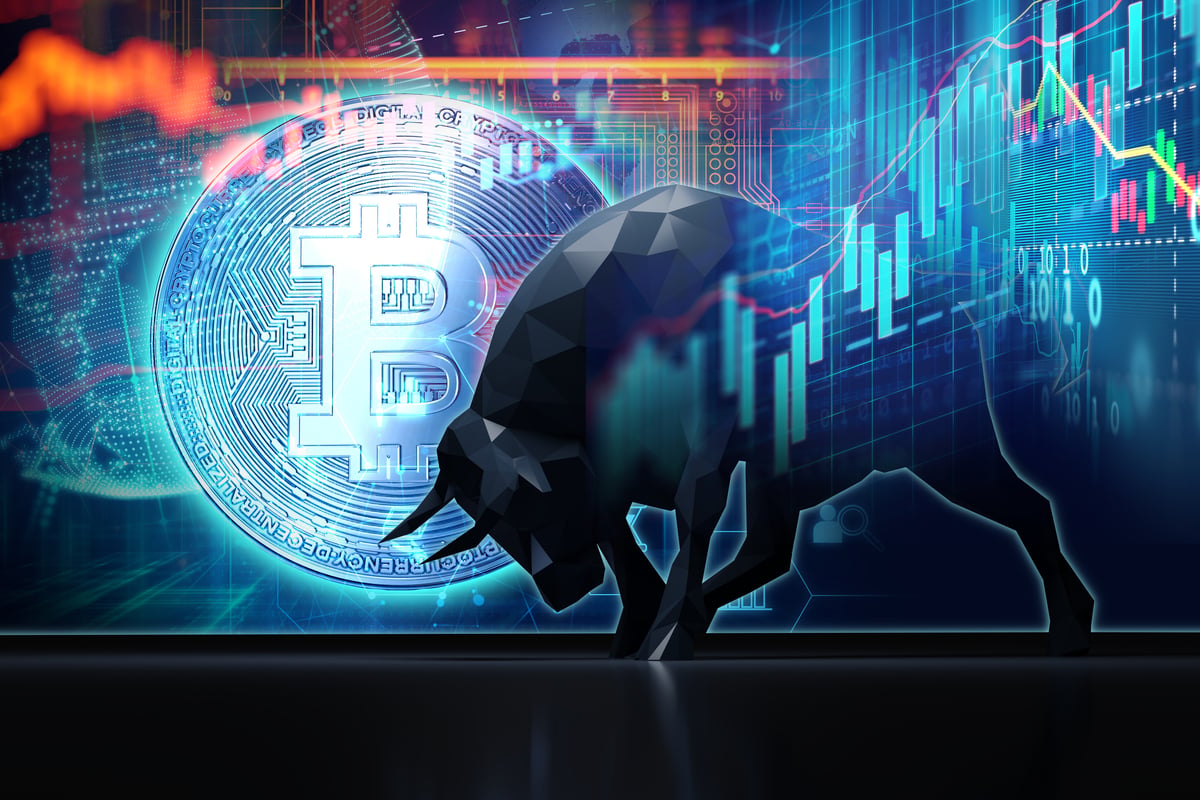Bitcoin (BTC 1.51%) and XRP (XRP 3.63%) looked unstoppable for months, until both paused to catch their breath. XRP tumbled by close to 20% in a single session, and Bitcoin retreated after reaching a new all-time high in mid-July. Those red lines on the chart then sparked fresh chatter that crypto's summer rally might be over.
But pullbacks are part of every bull run, and the numbers behind both assets and the wider macro backdrop indicate that these moves are more of a normal pit stop than a trend reversal. Here's why.

Image source: Getty Images.
A quick drop doesn't equal a deep freeze
First, these air pockets are normal even during rising markets.
Even the 2020-21 bull run featured multiple 20% to 50% retreats, yet the cycle finished much higher than it started. Those who sold their coins during those downturns ended up seeing the assets simply climb higher after fairly brief dips. Similarly, those who simply held on through the dips tended to be rewarded, at least until the bull market ended.
So far in the 2024 to 2025 crypto bull market, the deepest Bitcoin decline has barely scraped 20%, with most pullbacks stalling at 15% or less. In other words, the current correction is mild by historical standards. And it's nothing on the scale of bear market plunges, which have often approached a decline of 80% from the top.

CRYPTO: BTC
Key Data Points
Generally during normal corrections in bull markets, short-term leveraged traders wash out first, followed by flighty short-term investors. Overleveraged traders get liquidated, and then spot sellers lock in their profits, assuming they aren't trying to cut their losses.
Meanwhile, long-term holders, the cohort behind Bitcoin's and XRP's secular uptrends, rarely sell into single-digit percentage dips, nor should they. Price charts zoomed out to six months still show the coins making higher highs and higher lows -- a textbook definition of an intact uptrend.
More importantly, in the case of both Bitcoin and XRP, the fundamental factors driving their climb are fully intact. So the investment thesis of long-term investors is still valid, as are the macro factors that create the conditions for the uptrend to continue.
A genuine market cooling would look different from what we are seeing now. It would likely feature multi-week exchange-traded fund (ETF) outflows, shrinking on-chain activity, fading liquidity, and macro headwinds that curtail the risk appetite of institutional investors.
None of those pieces are in place yet. Nor are there indications that things are about to take a turn in that direction.
Liquidity, adoption and scarcity are going to keep the thermostat high here
If anything, macro conditions remain bullish.
The global M2 money supply hit a record $55.5 trillion on July 2, extending a liquidity wave that historically tracks tightly with Bitcoin's rise. Furthermore, central banks are still tilting dovish in terms of their monetary policies. The Bank of England is even mulling a rate cut in early August to keep markets calm, and it isn't the only bank in a rate-cutting pattern right now. That cheap money needs a home, and crypto will keep claiming a slice.
Strong and persistent institutional demand is also still visible in the spot exchange-traded funds (ETFs) that hold Bitcoin. On July 11, such ETFs had inflows of $1.3 billion, a gargantuan haul. Occasional outflows from ETFs are typical profit-taking, and they've been consistently outweighed by steady inflows.
Bitcoin's tightening supply story only sweetens the bid. April 2024's halving cut the block mining reward in half, and new issuance from miners is now capped at roughly 450 coins per day. Demand does not need to surge here for the price of the coin to continue to increase -- it merely has to stay steady for scarcity to nudge prices upward over time.

CRYPTO: XRP
Key Data Points
Additionally, XRP's fundamentals are enjoying their own upgrade cycle thanks to the development efforts of Ripple, the company that issues the coin. Ripple's focus at the moment is to develop more regulatory compliance features prized by large asset managers seeking compliant on-chain infrastructure to manage their money. Institutional comfort is the single biggest catalyst for XRP adoption, and every incremental tooling win strengthens its moat.
So neither XRP nor Bitcoin are in trouble here, despite the recent correction.
None of this guarantees perpetual gains, however, or that the bull trend will continue forever. Risk-on sentiment is strong right now, but it can be fickle if investors get skittish about macro factors, especially geopolitical ones.
For now, for long-term accumulators using dollar-cost averaging to build up their portfolios, dips like these are what keep the strategy humming. Buy the dip here, especially if it gets a little bit deeper during the next few weeks.





